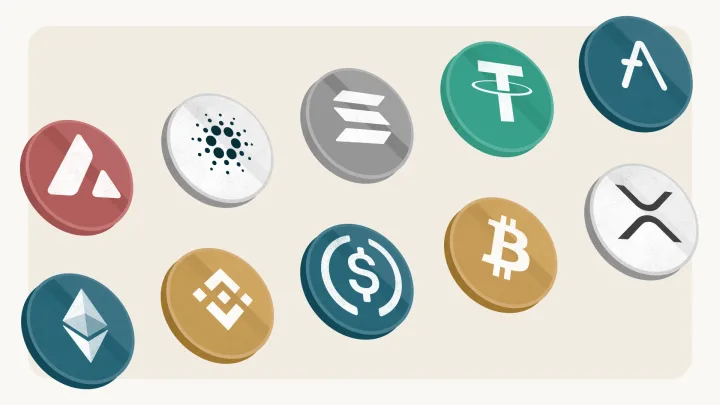Cryptocurrencies have revolutionized the financial landscape by offering decentralized alternatives to traditional banking systems. Here’s an overview of ten popular cryptocurrencies and a brief explanation of how they work.
1. Bitcoin (BTC)
Bitcoin is the pioneering cryptocurrency, created by an anonymous entity known as Satoshi Nakamoto in 2009. It operates on a decentralized ledger called the blockchain, which records all transactions. Bitcoin uses a proof-of-work (PoW) consensus mechanism, requiring miners to solve complex mathematical problems to validate transactions and create new coins.
2. Ethereum (ETH)
Ethereum was proposed by Vitalik Buterin and launched in 2015. It extends beyond a digital currency by providing a platform for smart contracts and decentralized applications (dApps). Ethereum uses a similar blockchain technology to Bitcoin but introduces a more versatile programming language for building and executing smart contracts. Currently transitioning from PoW to proof-of-stake (PoS) through Ethereum 2.0, it aims to improve scalability and reduce energy consumption.
3. Binance Coin (BNB)
Binance Coin is the native cryptocurrency of the Binance Exchange, one of the largest cryptocurrency trading platforms. Initially launched as an ERC-20 token on the Ethereum blockchain, BNB has since migrated to Binance’s own blockchain, Binance Chain. It is used to pay for trading fees on the Binance platform, participate in token sales, and more.
4. Cardano (ADA)
Cardano is a blockchain platform founded by Charles Hoskinson, a co-founder of Ethereum. It emphasizes a research-driven approach and uses a PoS consensus mechanism called Ouroboros. Cardano aims to provide a more secure and scalable infrastructure for the development of decentralized applications and smart contracts.
5. Solana (SOL)
Solana is known for its high throughput and low transaction costs. Launched in 2020, Solana uses a unique combination of PoS and proof-of-history (PoH) to process transactions efficiently. This allows it to handle thousands of transactions per second, making it a popular choice for dApps and decentralized finance (DeFi) projects.
6. Ripple (XRP)
Ripple focuses on facilitating real-time, cross-border payments. Unlike many cryptocurrencies, Ripple doesn’t rely on a traditional blockchain but uses a consensus ledger known as the Ripple Protocol Consensus Algorithm (RPCA). XRP is designed to act as a bridge currency in financial transactions, making international money transfers faster and more cost-effective.
7. Polkadot (DOT)
Polkadot, created by Ethereum co-founder Gavin Wood, is designed to enable different blockchains to interoperate. The network uses a PoS mechanism and includes a main relay chain and various parachains (independent blockchains). This design facilitates cross-chain transfers of data and assets, promoting a more connected and versatile blockchain ecosystem.
8. Chainlink (LINK)
Chainlink aims to bridge the gap between smart contracts and real-world data by providing decentralized oracles. These oracles supply external data to blockchain-based smart contracts, enabling them to interact with off-chain information and events. This functionality is crucial for the development of reliable and actionable dApps.
9. Litecoin (LTC)
Litecoin was created by Charlie Lee in 2011 as a “lighter” version of Bitcoin. It offers faster transaction times and a different hashing algorithm (Scrypt) compared to Bitcoin’s SHA-256. Litecoin’s main aim is to serve as a practical digital currency for everyday transactions while maintaining a similar decentralized structure to Bitcoin.
10. Stellar (XLM)
Stellar focuses on improving cross-border payments and financial inclusion. Founded by Jed McCaleb, Stellar’s blockchain is designed to facilitate fast and low-cost transactions between different currencies. The Stellar network uses the Stellar Consensus Protocol (SCP) for transaction verification and is integrated with various financial institutions.
These cryptocurrencies represent a diverse range of applications and technological innovations within the blockchain space. Understanding their underlying mechanisms can provide valuable insights into their unique functionalities and use cases.
